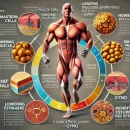Vascular Surgeon’s Role in Treating Abdominal Aortic Aneurysms

Imagine this. Your day-to-day life takes a sudden turn when you experience a pulsating sensation in your abdomen. You’re diagnosed with an abdominal aortic aneurysm. In a heartbeat, your world transforms into a whirlwind of medical jargon and uncertainty. But there’s a beacon of hope – a vascular surgeon. The same stalwart who addresses conditions such as leg ulcers houston, steps into the fray to combat your ailment. This blog dives into their pivotal role in tackling abdominal aortic aneurysms. Let’s begin this journey of understanding together.
Abdominal Aortic Aneurysms – A Silent Threat
Abdominal aortic aneurysms are like ticking time bombs. They grow silently in your abdomen, waiting to rupture without warning. When they do, it’s a medical emergency. Half of those who experience a rupture don’t make it to the hospital in time.
Your Life-Saver: The Vascular Surgeon
Enter the vascular surgeon. These medical professionals are trained to manage diseases in your blood vessels. Their expertise ranges from minimally invasive procedures to complex open surgeries. They are the sentinels guarding your circulatory system, ready to intervene at the first sign of danger.
How Vascular Surgeons Fight Abdominal Aortic Aneurysms
Here’s what happens when an abdominal aortic aneurysm is detected. Your vascular surgeon springs into action. They’ll assess the size and growth rate of the aneurysm. If it’s small or growing slowly, they might monitor it closely. But if it’s large or growing rapidly, surgery might be necessary.
There are two main types of surgery for abdominal aortic aneurysms:
- Open abdominal surgery
- Endovascular aneurysm repair (EVAR)
In open abdominal surgery, the surgeon makes a large incision in your abdomen to access the aneurysm. They replace the weakened part of your aorta with a man-made tube.
In EVAR, the surgeon makes small incisions near your groin. They insert a catheter into your blood vessels and guide it to the aneurysm. They then place a stent-graft inside the aneurysm to reinforce it.
The Road to Recovery
Post-surgery, your vascular surgeon will continue to monitor you. They’ll check your progress and ensure the stent-graft is holding up. They’ll also provide guidance on lifestyle modifications to keep your vascular system healthy. This includes quitting smoking, eating a balanced diet, and getting regular exercise.
So there you have it. The pivotal role of a vascular surgeon in tackling abdominal aortic aneurysms. These medical heroes handle everything from diagnosing to treating the condition, and help navigate the road to recovery. They’re not just surgeons; they’re lifesavers.








